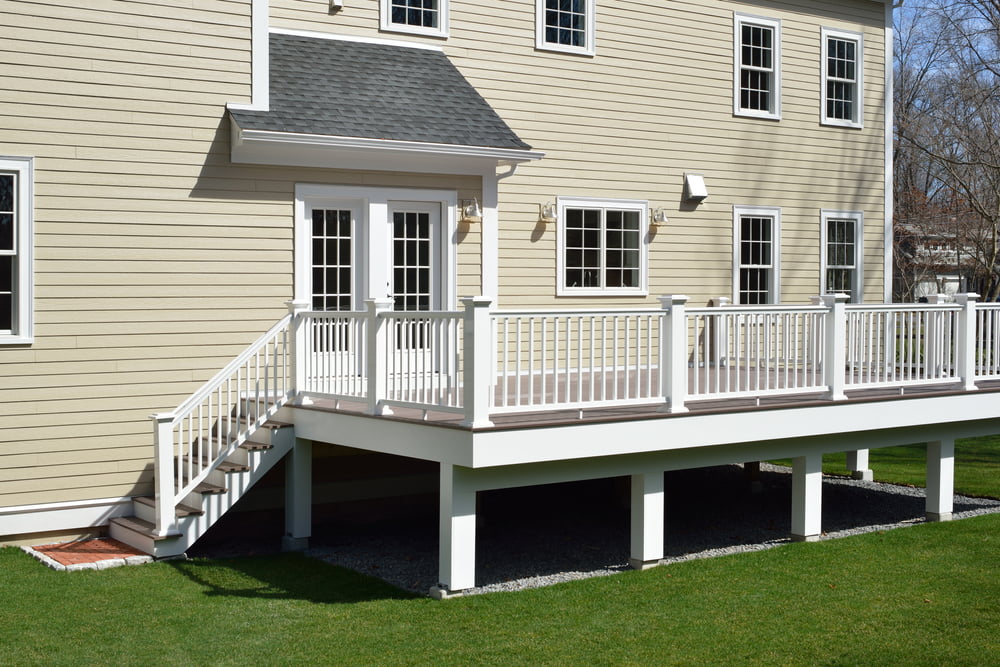7 mistakes to avoid when installing deck railing systems

The deck of a house is a beautiful place. It is an extension where the family can enjoy the pleasures of the outdoors without leaving the home. However, to make the deck safe and usable, one needs to install a railing around it. The rails should be firm and designed in such a way that it does not spoil the deck’s beauty. Here are seven common deck railing installation mistakes to avoid.
Not following the instructions
Most railing systems sold in stores are available as complete kits. One of the most beneficial things about these kits is that they come with a guide. This guide has instructions for installing the deck rails, which one should follow from start to finish. For instance, it tells users how to measure the floor, which tools to use, and how to install the brackets. An individual needs to stick to these instructions and do everything as mentioned in the guide, regardless of whether they are new to deck rail installation or not. This is because every railing system is designed differently, and not following the manufacturer’s instructions can lead to errors that can be hard to fix.
Not taking accurate measurements
One of the most crucial mistakes to avoid when installing deck rails is not taking accurate measurements. Even the slightest mistake when measuring the deck can lead to the rails getting misaligned or installed improperly, which will end up making the place look shabby. So, taking all the measurements twice (or even thrice) is always a good idea to ensure no errors occur. Individuals must also make it a point to measure every part of the railing, such as the bottom rail, the top rail, the balusters, and the rail cap. While doing the job, one should adhere to the safety guidelines for the best outcome.
Buying low-quality materials for installation
It is very important to prioritize quality over price when purchasing deck railings. Regardless of which material the railing is made of—be it wood, metal, or composite—it must be strong. Secondly, the material should be able to resist weather damage. Otherwise, the railing and the deck would not last long, requiring one to spend on repairs. Besides the railing, one must ensure the other materials, like the nails, bolts, and metal fasteners, are of good quality. These should be coated or galvanized so they do not rust and maintain the deck’s structural integrity.
Not obtaining the required permits
Before beginning any work on the deck, one should get the required permits to avoid trouble. Most cities in the country require homeowners to get a valid permit before making any major changes to the house. One can obtain this permit by visiting their nearest planning office. To get the permit, individuals may have to submit the plan of the deck. One may also have to disclose the measurements of the railing height, the space between each railing, the size of the deck board, etc. Furthermore, one may have to mention which materials they are using. The office requires these details to ensure all the measurements, materials, and other aspects of the plan meet safety requirements. If these permits are not secured beforehand, the local authorities can order the homeowner to take down the railings.
Going for an overtly complicated design
Homeowners often get tempted to choose the most aesthetically pleasing design for the deck rails. While there’s no problem buying rails that look good, one should ensure the design is simple enough. Complicated designs may be hard to install and may require the person to hire a contractor in some cases. If the railings are not installed properly, it could become a severe safety hazard. So, to be on the safe side, it is better to choose a simple design or get the help of professionals for installation.
Not hiring professionals for installation
Most individuals feel installing deck railings is a simple task that they can accomplish themselves. While this may be true, some may not have experience with the job or sufficient knowledge. In such a scenario, it is better to turn to professional contractors and hire them for installation. Not doing so out of embarrassment or any other reason may be a mistake. However, it is not ideal to hire any random contractor. Individuals must take their time and shortlist good contractors before finally deciding on one. Asking friends and family members for recommendations and browsing the internet can help find a reliable contractor nearby.
Not cleaning the mess
The process of installing deck railings does not end with the railings getting fixed. Once the installation is complete, the deck and the surrounding area will be a complete mess. There will be wood shavings, nails, metal blocks, and other waste materials lying around. If this mess is not cleaned, it could lead to severe accidents and injuries. Not only that, the metal shavings could get embedded into the deck and ruin its appearance. Therefore, it is best to take time to properly clear out all the debris after the installation is complete. Although it may not be an exciting job, it is absolutely necessary.


